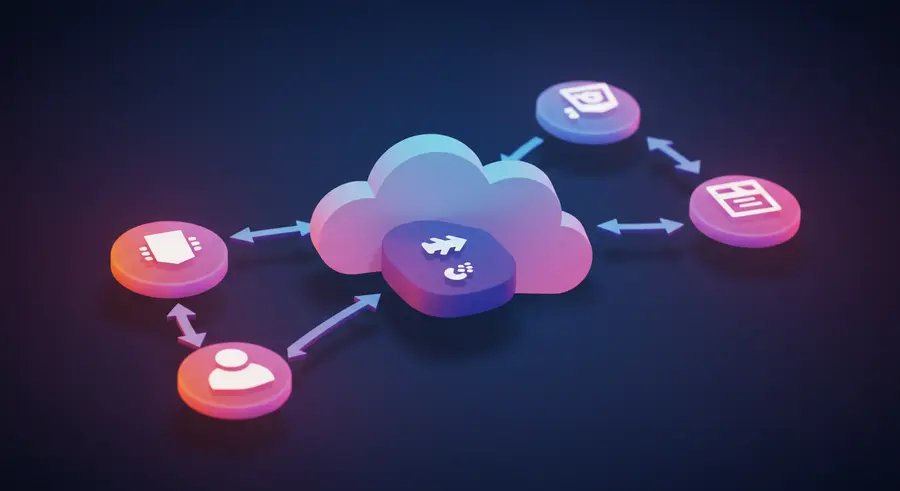Serverless Microservices: Building Scalable and Resilient Applications

The landscape of modern application development is constantly evolving, with serverless computing and microservices emerging as two of the most transformative paradigms. While often discussed separately, their convergence offers a compelling approach to building highly scalable, resilient, and cost-effective distributed systems. This article delves into the synergy between serverless architectures and microservices, exploring their combined benefits, design considerations, and best practices for implementation.
What are Serverless Microservices?
At its core, a serverless microservice is an independently deployable, small, and loosely coupled service that runs on a serverless platform (like AWS Lambda, Azure Functions, or Google Cloud Functions). Instead of provisioning and managing servers for each microservice, developers simply upload their code, and the cloud provider handles all the underlying infrastructure, including scaling, patching, and maintenance.
This fusion brings together the best of both worlds:
- From Microservices: Modularity, independent deployment, technology diversity, and enhanced agility.
- From Serverless: Automatic scaling, pay-per-execution billing, reduced operational overhead, and inherent high availability.
Benefits of Combining Serverless and Microservices
The union of serverless and microservices unlocks a multitude of advantages for organizations:
1. Enhanced Scalability and Elasticity
Serverless platforms automatically scale functions based on demand, meaning individual microservices can scale independently to handle varying loads without manual intervention. This elasticity is crucial for applications experiencing unpredictable traffic patterns, ensuring optimal performance without over-provisioning resources. For businesses seeking to optimize their resource allocation and gain crucial market insights, understanding scalable architectures is paramount.
2. Reduced Operational Overhead
By abstracting away server management, serverless microservices significantly reduce the operational burden on development teams. This allows engineers to focus more on writing business logic and less on infrastructure concerns like server provisioning, patching, and monitoring. This shift in focus accelerates development cycles and time-to-market.
3. Cost Efficiency
The "pay-per-execution" model of serverless computing means you only pay for the compute time your functions actually consume. When combined with microservices, this translates to significant cost savings, especially for services with infrequent usage or highly variable traffic, as resources are not idle but scaled down to zero when not in use. Businesses can leverage AI-powered analytics to understand resource consumption and optimize costs further.
4. Improved Developer Agility and Productivity
The independent nature of microservices, coupled with the rapid deployment capabilities of serverless, empowers development teams to work more autonomously. Smaller, focused teams can develop, test, and deploy individual microservices quickly, leading to faster iteration cycles and increased overall productivity. This allows for rapid portfolio management and quick adaptation to market changes.
5. Enhanced Resilience and Fault Isolation
In a serverless microservices architecture, the failure of one microservice is less likely to affect the entire application. Each function is isolated, and serverless platforms are designed for high availability, minimizing the blast radius of failures and improving overall system resilience. This isolation is a key factor in building robust, fault-tolerant systems.
Design Considerations for Serverless Microservices
While the benefits are compelling, designing effective serverless microservices requires careful consideration of several factors:
- Function Granularity: Determine the optimal size and scope of each serverless function. Ideally, each function should represent a single responsibility or a small, cohesive set of related tasks.
- Communication Patterns: Choose appropriate communication mechanisms between microservices. Event-driven patterns (e.g., using message queues like SQS or event buses like EventBridge) are highly recommended for loose coupling. Direct API calls via API Gateway are also common for synchronous interactions.
- Data Management: Each microservice should ideally own its data. While shared databases can introduce coupling, serverless-friendly databases (like Amazon DynamoDB, Aurora Serverless, or Google Cloud Firestore) can support independent data stores for microservices.
- API Design: Design well-defined APIs for your serverless functions to ensure clear contracts between services.
- Observability: Implement robust logging, monitoring, and tracing across your serverless microservices. Tools like AWS X-Ray, CloudWatch, Azure Monitor, and Google Cloud Operations Suite are essential for understanding system behavior and troubleshooting.
- Security: Apply least-privilege principles to IAM roles for each function. Secure API endpoints and implement proper input validation.
Common Use Cases
Serverless microservices are well-suited for a wide range of applications, including:
- Web Applications and APIs: Building scalable backends for web and mobile applications.
- Data Processing Pipelines: Event-driven ingestion, transformation, and analysis of data.
- Real-time Applications: Chatbots, IoT data processing, and live dashboards.
- Backend for Frontend (BFF): Creating specialized APIs for different client applications.
- Scheduled Tasks: Running cron jobs and batch processing workflows.
Conclusion
Serverless microservices represent a powerful evolution in cloud-native development. By combining the architectural strengths of microservices with the operational benefits of serverless computing, organizations can build highly scalable, resilient, cost-effective, and agile applications. While careful design and an understanding of serverless nuances are crucial, the long-term benefits in terms of developer productivity and reduced operational burden make this an increasingly attractive approach for modern enterprises navigating complex markets and seeking investment analysis tools.
For more advanced topics and resources on cloud computing and distributed systems, consider exploring: